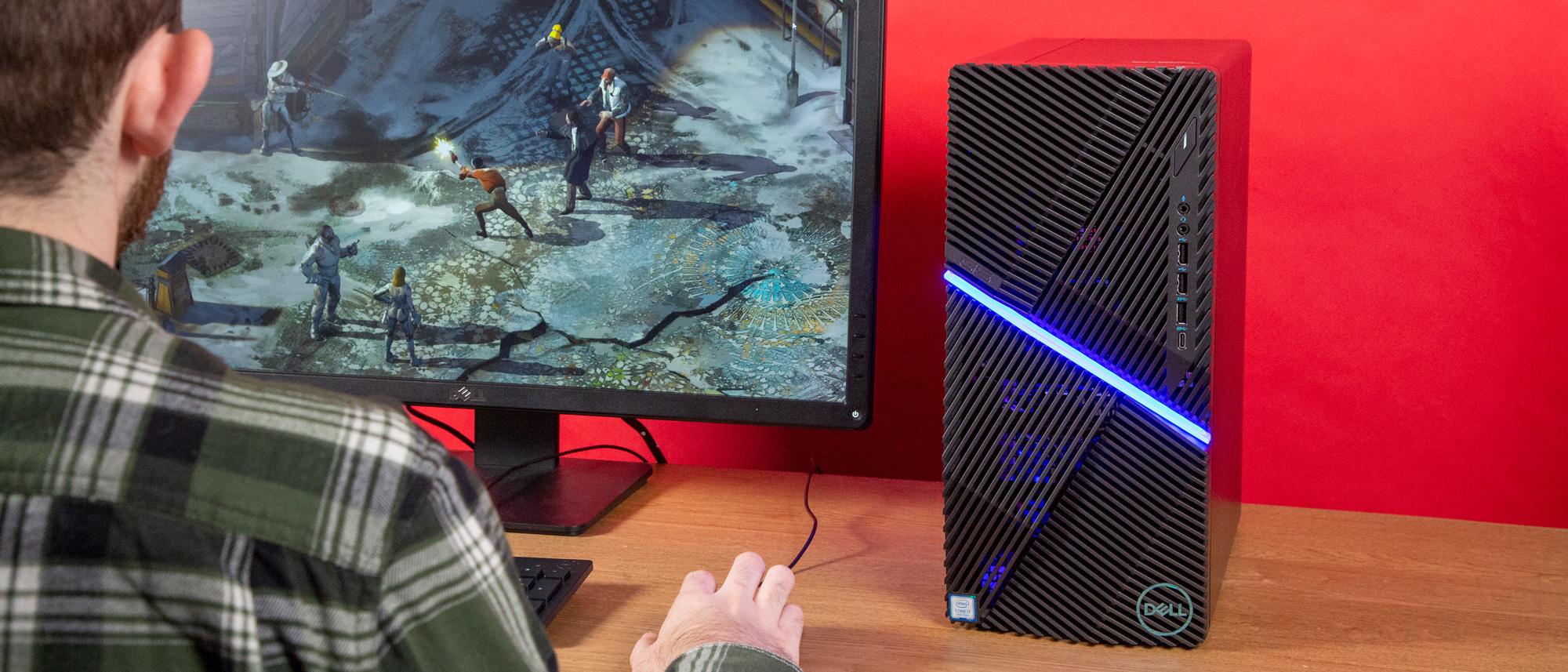Tom's Guide Verdict
The Dell G5 5090 can handle both demanding games and productivity tasks with ease, but its specs are lackluster.
Pros
- +
Good productivity and gaming performance
- +
Reasonably priced
- +
Great chassis
Cons
- -
Preinstalled software can be a pain
- -
Not ideal for QHD/UHD gaming
Why you can trust Tom's Guide
The Dell G5 5090 ($570 starting; $1,050 as reviewed) is a relatively powerful gaming PC, provided you keep your games in the full-HD range. This gaming desktop can handle both demanding games and productivity tasks with ease, and if you need to upgrade it in the future, all you need is a single screwdriver.
The cheapest G5 5090 configuration comes with pretty modest parts, while the much fancier model we reviewed still can't offer 4K gaming or a great deal of storage space. Still, taken on its own merits, the G5 5090 is one of the best computers around, with a lot to offer the full-HD crowd. If you don't feel comfortable building your own system, the G5 holds its own against the best gaming PCs in its price range.
Dell G5 5090 price and configurations
Our review unit of the Dell G5 5090 costs $1,050 on Dell's website, marked down from $1,239. This unit comes equipped with a 9th-Gen Intel core i7 9700 processor, an Nvidia GeForce GTX 1660 Ti graphics card, 16GB of RAM, a 256GB SSD and a 1TB SATA hard drive. (In the interest of full disclosure, our unit came with a 500GB SSD and nothing else, but this configuration doesn't seem to be available for purchase. Everything else was identical to the $1,050 configuration.)
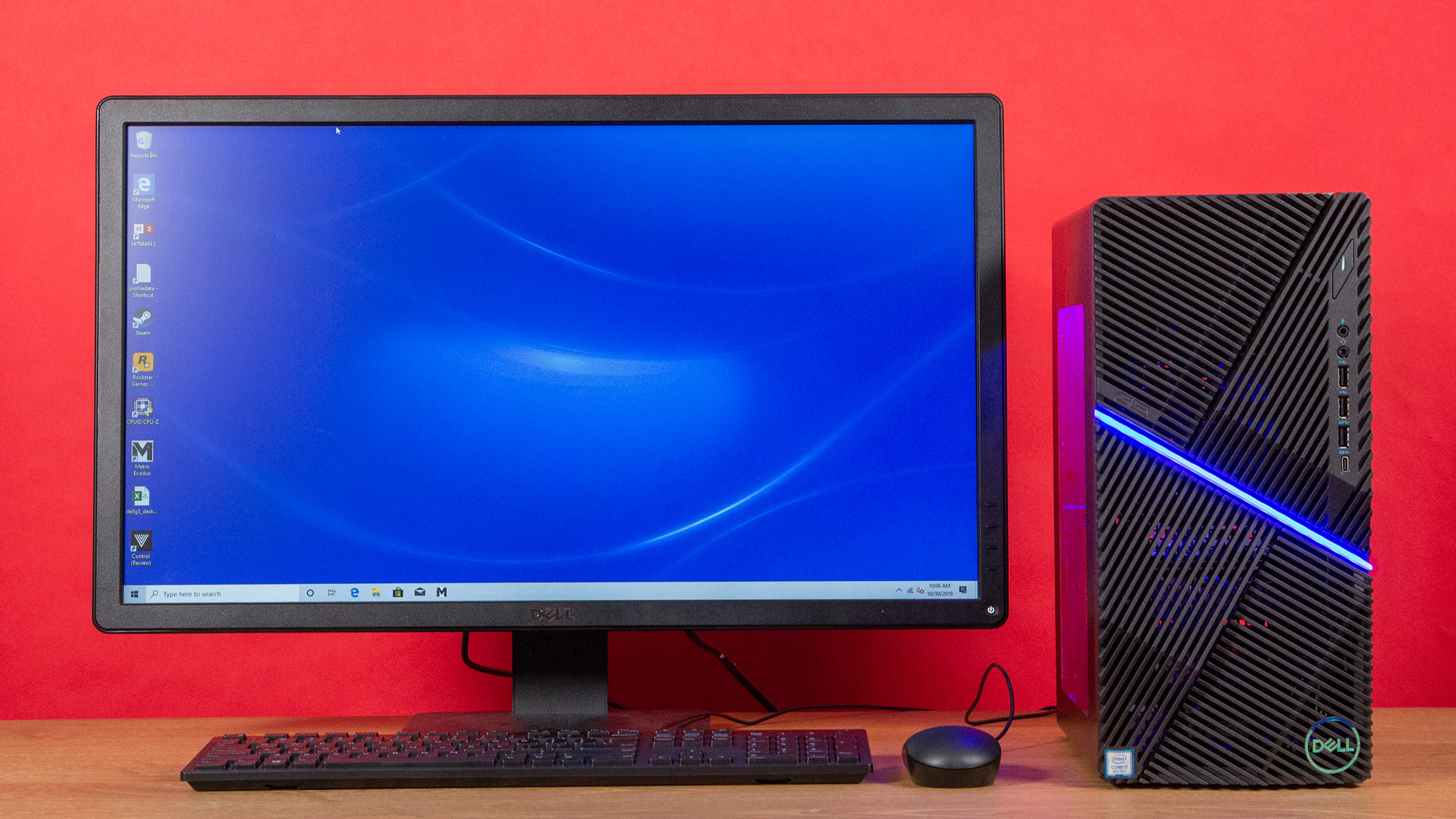
At the cheapest end of the spectrum, you can get an Intel Core i3 processor, an Nvidia GeForce GTX 1650, 8GB of RAM and a 1TB SATA hard drive, all for $570. The top-end configuration costs $1,500 and comes with an Intel Core i7 processor, an Nvidia GeForce RTX 2070 GPU, 16GB of RAM and a 1TB SSD.
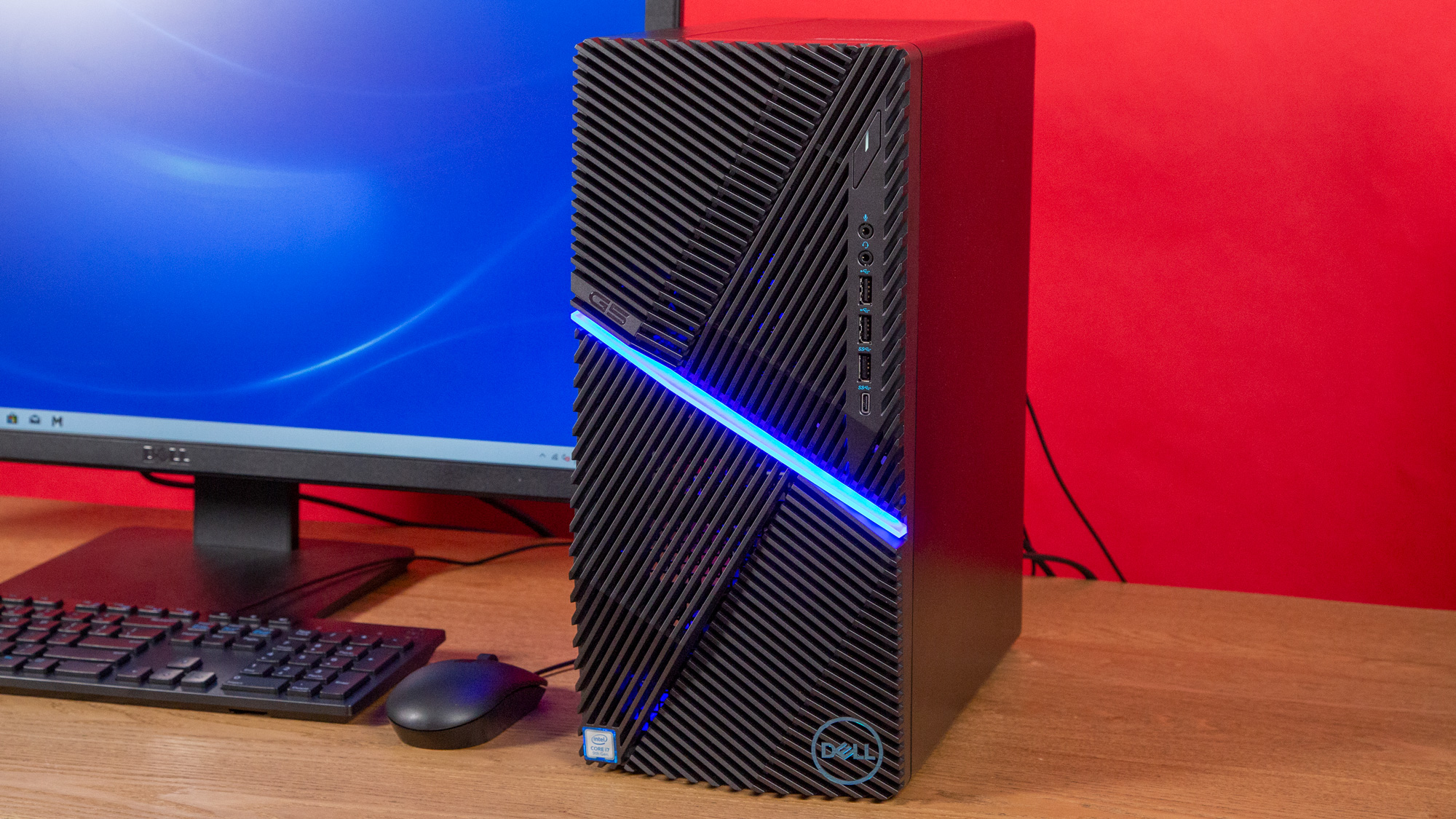
There are some gradations in between, as well as options, like adding more RAM or storage space, that will increase the price. But generally speaking, the G5 5090 will set you back somewhere between $600 and $1,500 for low- to mid-range gaming PC specs. Dell recommends running all models at 1080p.
Dell G5 5090 design and lighting
One thing I appreciate about the G5 5090 is that it keeps things simple, appearance-wise, but still has a little flair. The chassis is surprisingly small, at 14.5 x 12.1 x 6.7 inches and 18.6 pounds. You can put it right on top of your desk if you have enough room, but it's also sturdy enough to live on the floor without getting kicked over accidentally. On the front, there's an elegant crosshatch pattern and a diagonal blue LED strip. I liked the LED, but I was disappointed that there's no way to dim it without going into the BIOS and no way to change colors.
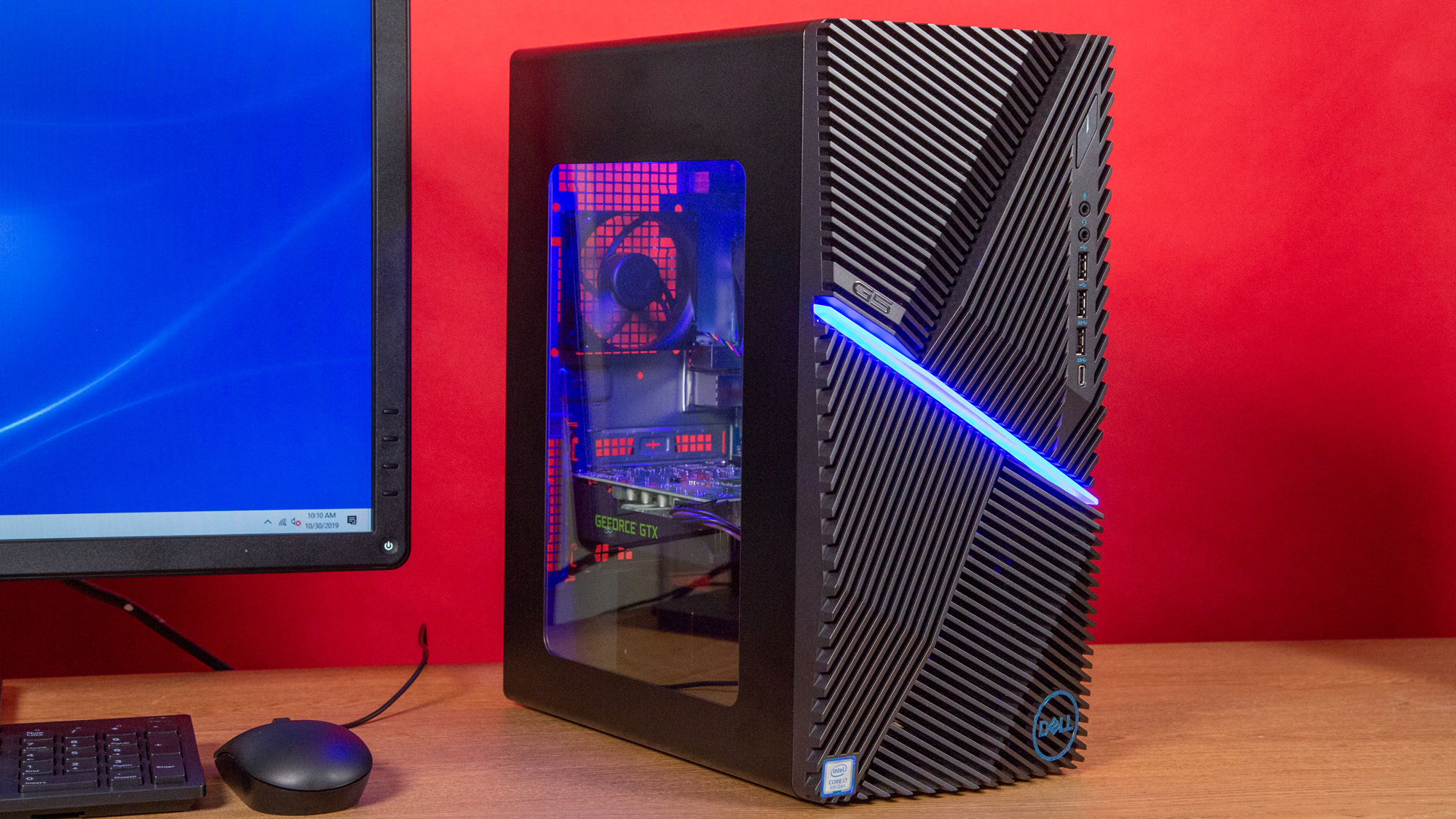
What I really like about the chassis, though, is the clear side panel. There's a clear, rounded, plastic rectangle on the G5 5090's left side, which lets you see the inner workings of the machine at all times, softly illuminated by the aforementioned blue LED. It's a very attractive setup, and it could theoretically let you diagnose hardware problems without ever cracking open your PC.
Dell G5 5090 ports and upgradability
The G5 5090 should have enough ports for all but the most accessory-laden PC enthusiasts. On the front of the machine, you'll find three USB-A ports, one USB-C port, a 3.5mm audio jack and a 3.5mm mic jack.
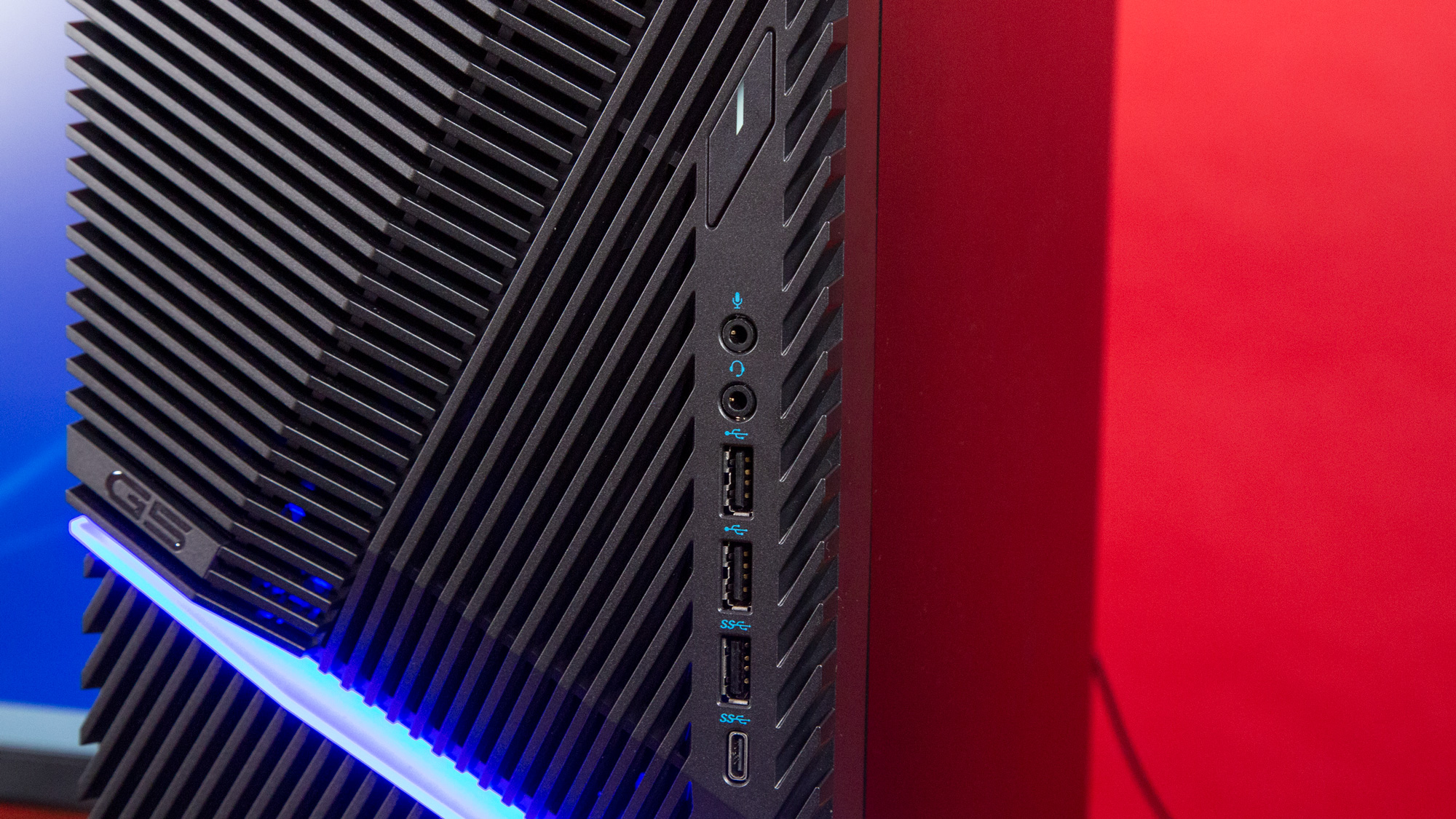
On the back, you get three more audio jacks (subwoofers or surround sound), six USB-A ports, an Ethernet port, a DVI port, an HDMI port and a DisplayPort. The computer also has an internal Qualcomm DW1810 chip for 802.11ac wireless and Bluetooth 4.2 connectivity.
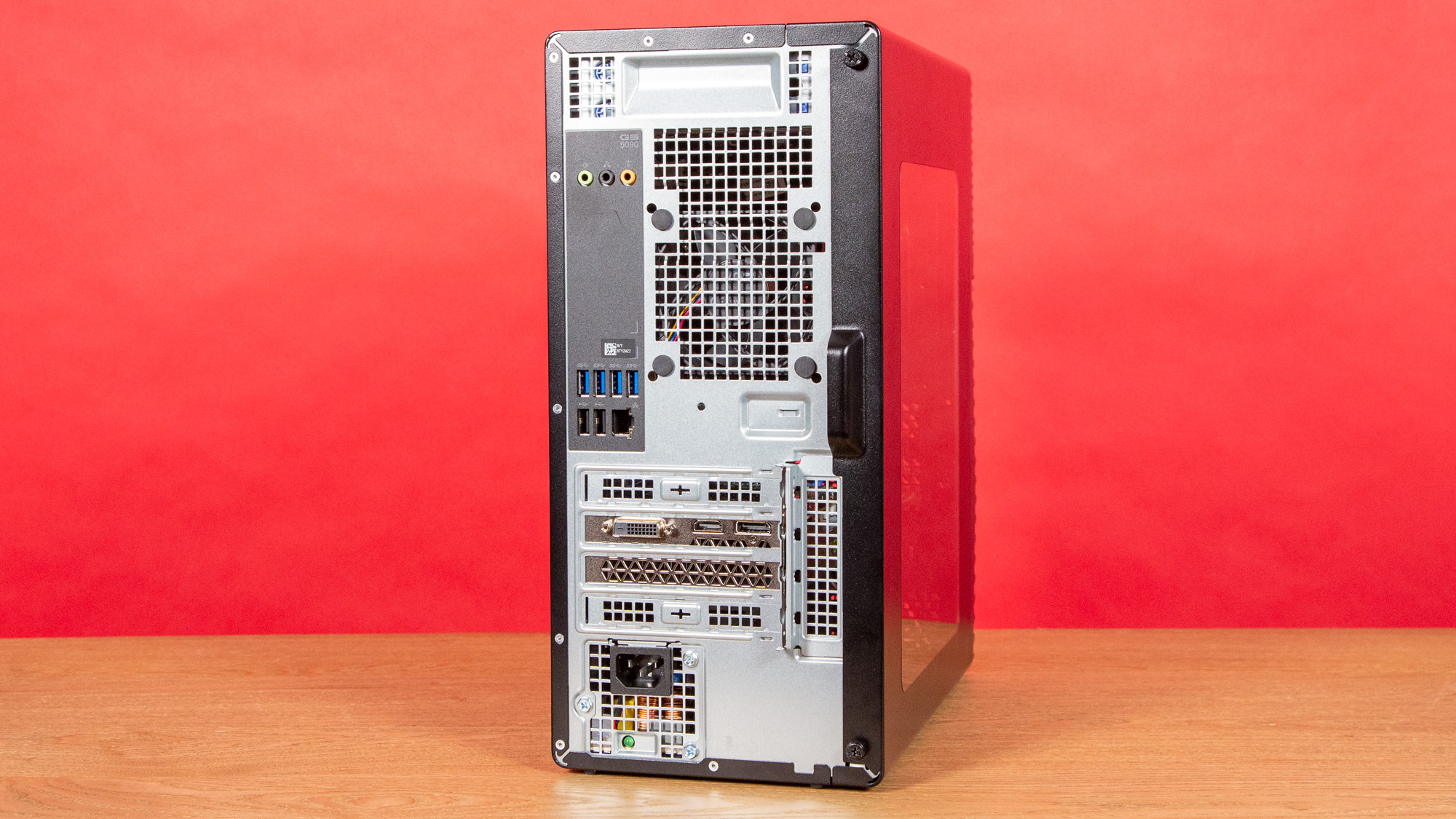
Upgrading the Dell G5 5090 was also admirably straightforward in our testing. You need only remove two big screws in the back; then you get direct access to the motherboard. The wiring is uncomplicated, so even a neophyte PC builder should be able to swap out RAM, upgrade a GPU or clean out a fan. However, there aren't many extra slots, so you'll be replacing parts, not adding them.
Dell G5 5090 gaming performance
While I'm still not sure a 1080p-optimized machine merits more than $1,000, the G5 5090 performs well enough in its comfort zone. This PC ran Far Cry New Dawn at 79 frames per second, Middle-earth: Shadow of War at 65 frames per second and Shadow of the Tomb Raider at 42 frames per second, all on Very High graphics settings. The Tomb Raider performance is a little disappointing, since even consoles can run this game at 60 fps (albeit not with perfect consistency).
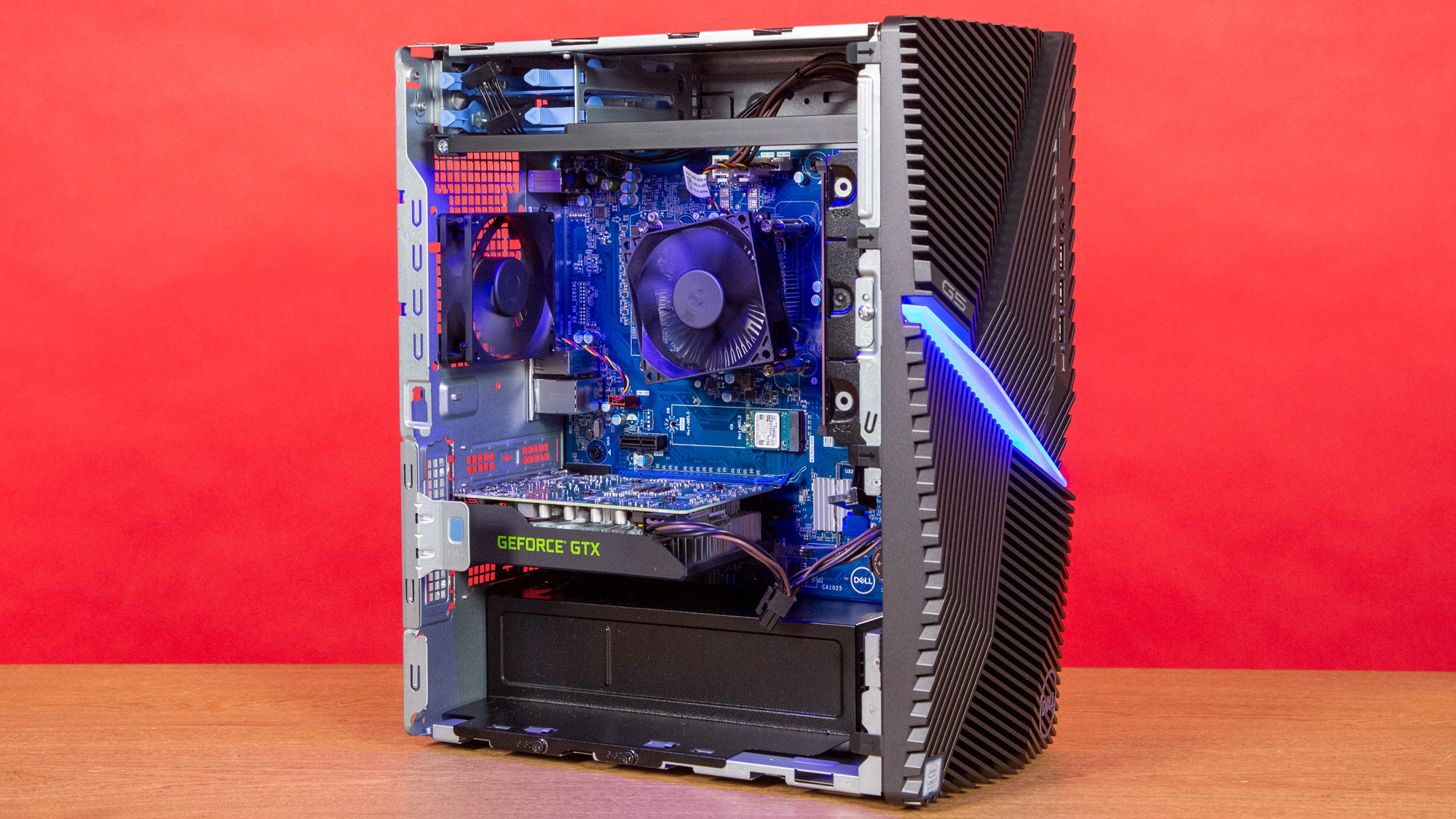
Compare and contrast these numbers to our category averages: 88 fps for Far Cry, 123 fps for Shadow of War and 96 fps for Shadow of the Tomb Raider.
Along similar lines, the G5 5090 scored 2,910 on our 3DMark Fire Strike Ultra synthetic benchmark, compared to a category average of 8,055. (It's worth noting that most gaming PCs we review are much more powerful than the G5 5090, and we haven't reviewed a similarly specced machine recently, so take this comparison with a grain of salt.)
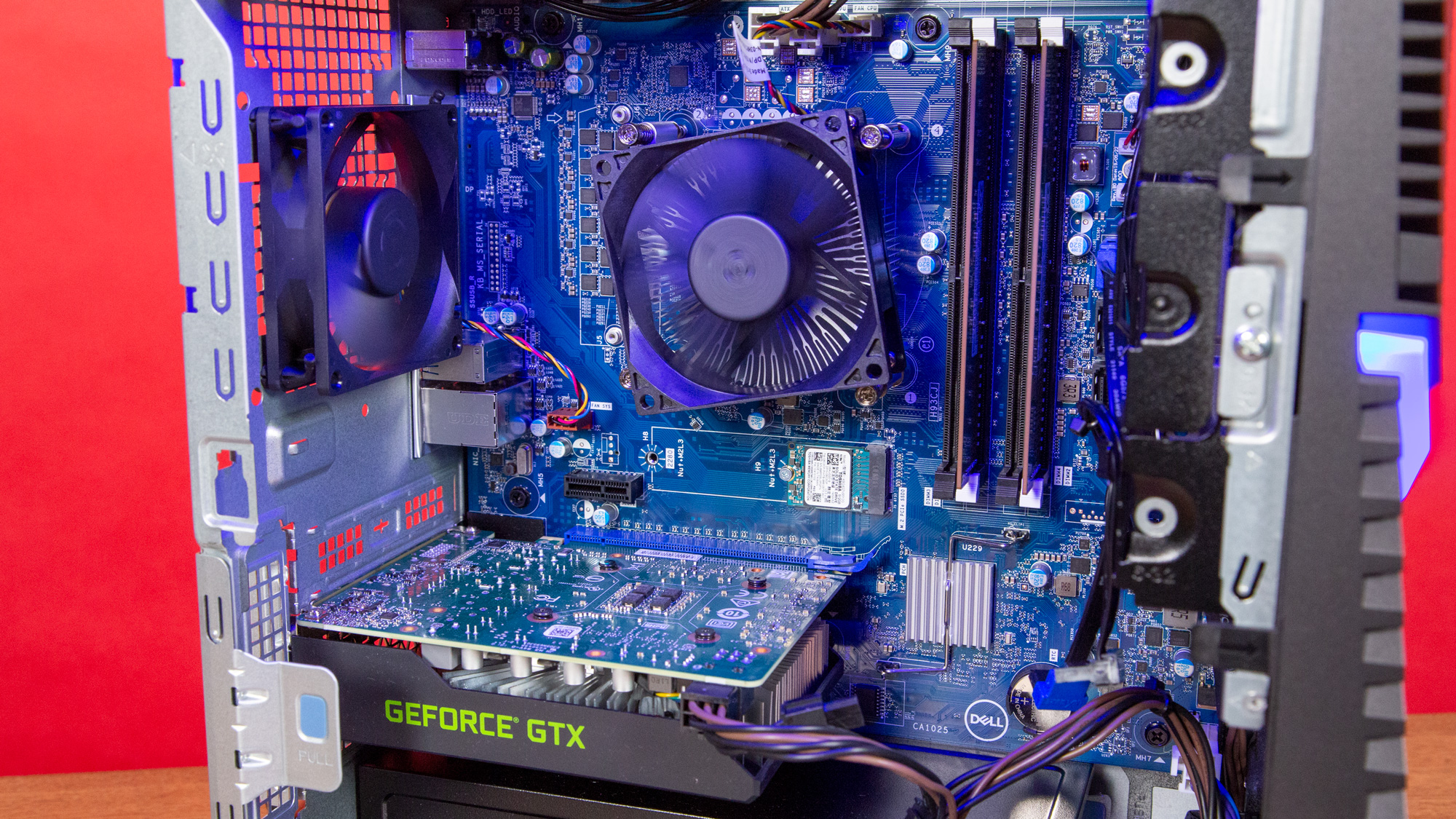
From a qualitative perspective, the Dell G5 5090 works quite well. I ran it through Age of Empires II: Definitive Edition, Overwatch, World of Warcraft and Thronebreaker: The Witcher Tales, with most of the settings turned up to Ultra. The games never dipped below 30 fps; most ran closer to 60. The G5 5090 stayed relatively quiet this whole time. While I wouldn't trust the system with 4K, or even QHD, resolutions, the Dell G5 5090 provided a solid gaming experience.
Dell G5 5090 overall performance
Like most gaming PCs, the G5 5090 handles everyday productivity better than most desktop PCs. No matter how many programs I ran on it simultaneously — Chrome, Slack, Microsoft Office, Netflix, Spotify, Thunderbird and more — the RAM and CPU rarely pushed up past the halfway marks. I even hooked up a second monitor, with no discernible loss in speed or fidelity.
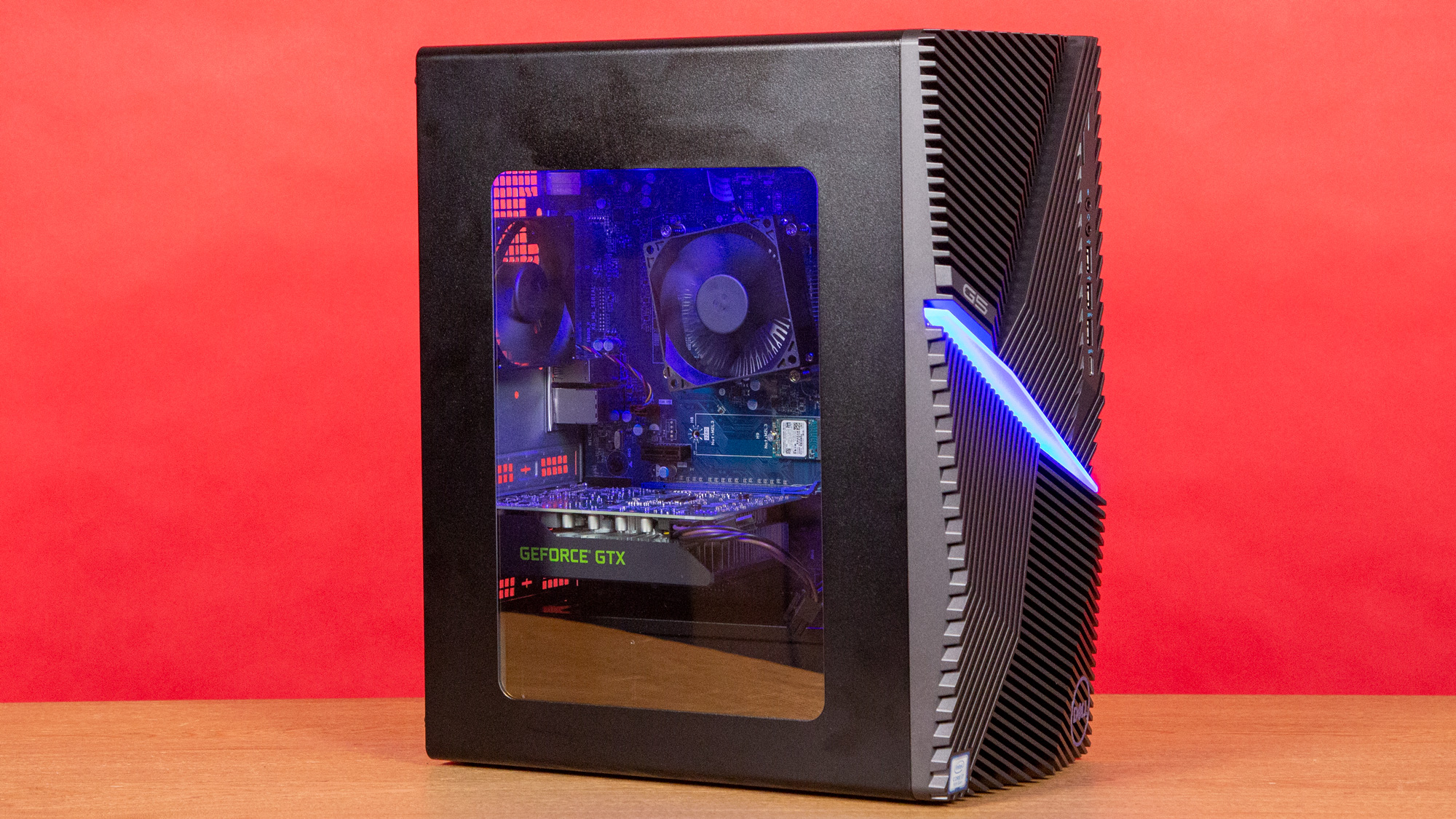
However, as in gaming, the G5 5090 can't really measure up to more powerful PCs in the productivity department. In the Geekbench 4.3 synthetic test, the G5 5090 scored 5,558 — far less than the 37,301 category average. On the other hand, the G5 5090 positively flew through transferring 5GB of files from a USB drive, doing so in 9 seconds and easily besting the category average of 15 seconds.
Dell software
The G5 5090 isn't overburdened with bloatware. You get Windows 10 Home Edition, plus some standard Dell software, which allows you to update firmware, contact customer support, optimize USB-C displays and so forth. This software didn't really get in the way while I was testing the machine, but I also deactivated a lot of it to save RAM.
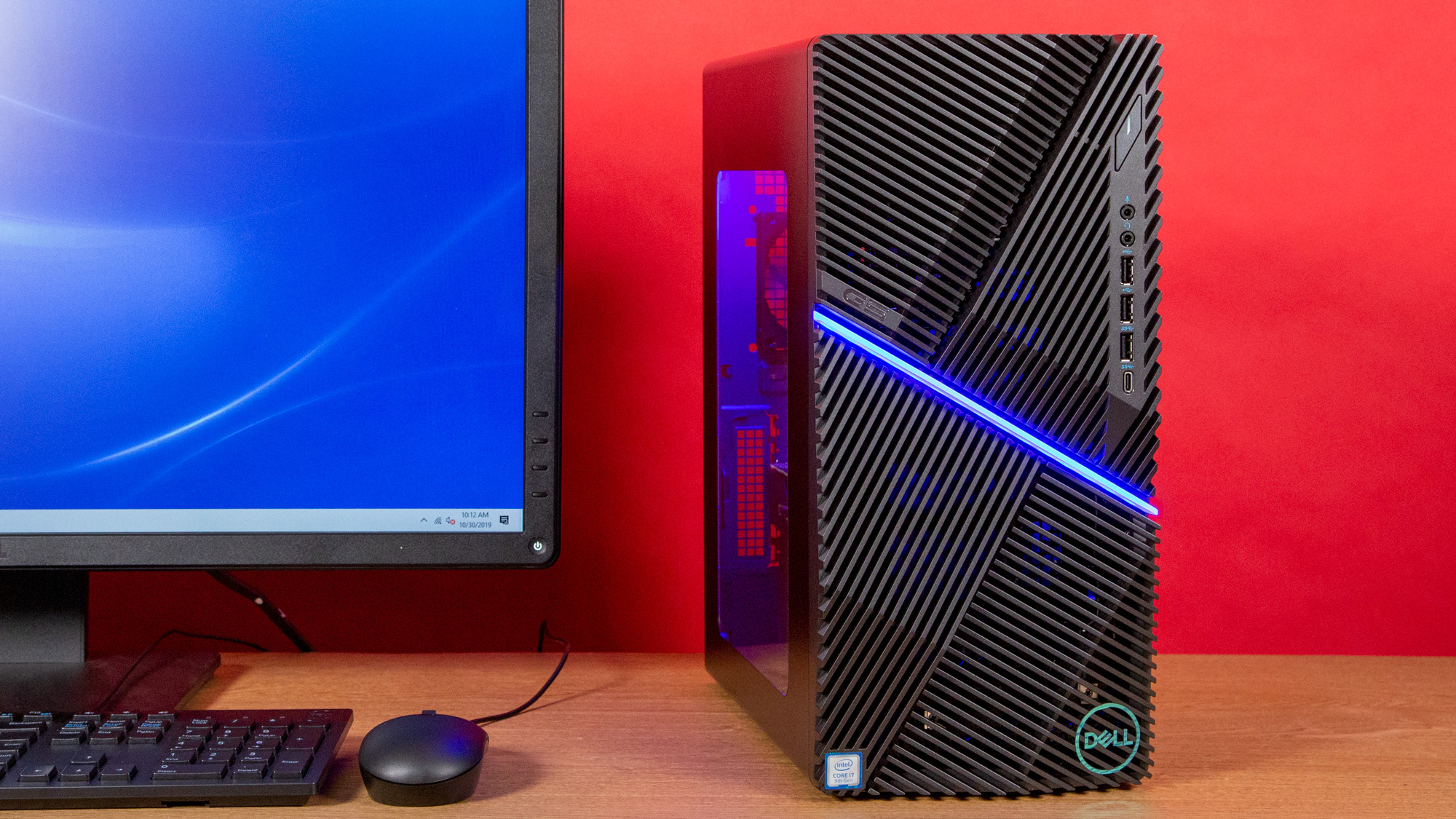
What did get in my way was the computer's free trial of McAfee Antivirus. When you purchase a G5 5090 (or most Dell machines), you get 12 months of this service for free. That's a nice gesture, but I would still delete the program right away.
Not only is McAfee a resource hog; it's also a pushy program that's constantly popping up with unwanted advice and recommendations. But the program's biggest fault is its false positives. It considers some very important gaming executables to be "trojans," deleting them without so much as a quarantine. I had to completely reinstall Star Wars: Galactic Battlegrounds from scratch — after uninstalling McAfee first, because there is no easy way to make its detection less aggressive or even just to disable the program. The default Windows Defender program is honestly a better choice, and that's saying something.
Bottom line
I liked using the Dell G5 5090. It provides smooth performance for 1080p games, along with excellent productivity options. The chassis looks great; the software is easy to use (with one notable exception); and it's not too expensive, as gaming PCs go.
For the Dell G5’s starting price, a 4K console offers better performance for the money, but our configuration is a perfectly good choice for gamers who want to join the PC market but aren't quite comfortable enough to build their own machines. And given the G5 5090's easy upgradability, this gaming desktop is more future-proof than your typical console.
Marshall Honorof is a senior editor for Tom's Guide, overseeing the site's coverage of gaming hardware and software. He comes from a science writing background, having studied paleomammalogy, biological anthropology, and the history of science and technology. After hours, you can find him practicing taekwondo or doing deep dives on classic sci-fi.
-
lordmage you should consider doing a noise normalized test for thermal load mine gets hot fast using a i7-10700kf even with tweaks and other things to control the thermal load it can jump fast in an 34C ambient roomReply
